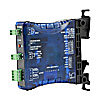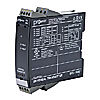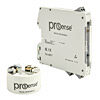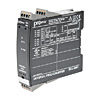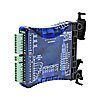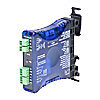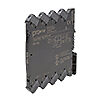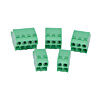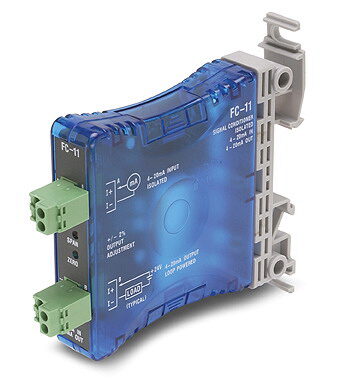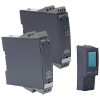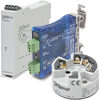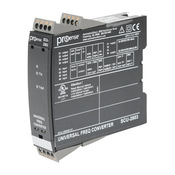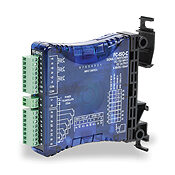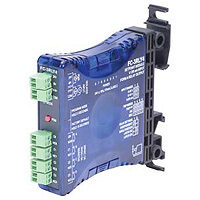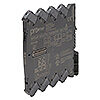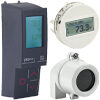 Cookies are not enabled on your browser.
Cookies are not enabled on your browser.Cookies are required for our site. Please enable cookies in your browser preferences to continue.
- Barcode / RFID / Vision
- Bulk Wire & Cable
- Cables (Terminated)
- Circuit Protection / Fuses / Disconnects
- Communications
- Drives & Soft Starters
- Enclosure Thermal Management & Lights
- Enclosures & Racks
- Field I/O
- HMI (Human Machine Interface)
- Hydraulic Components
- Motion Control
- Motor Controls
- Motors
- Pneumatic Components
- Power Products (Electrical)
- Power Transmission (Mechanical)
- Process Control & Measurement
- Programmable Controllers
- Pushbuttons / Switches / Indicators
- Relays / Timers
- Safety
- Sensors / Encoders
- Stacklights
- Structural Frames / Rails
- Tools & Test Equipment
- Valves
- Water (Potable) Components
- Wiring Solutions
- Retired Products
- Programmable Logic Controllers
- Productivity1000 PLCs
- Productivity2000 PLCs
- Productivity3000 PLCs
- ProductivityCODESYS
- LS Electric XGB Series PLCs
- ProductivityOpen
- CLICK PLCs
-
Do-more H2 PLCs or
Do-more T1H Series - Do-more BRX PLCs
- C-more Touch Panels
- AC & DC Drives
- Motion Control Components
- Servos
- StrideLinx
- Pneumatics
Configuration Utilities
- PLC Family Selector
- P1000 PLC Systems
- P2000 PLC Systems
- P3000 PLC Systems
- ProductivityCODESYS
- CLICK PLC Systems
- Do-more® BRX PLC Systems
- LS-Electric® XGB PLC Systems
- Productivity®Open Systems
- AC Motors
- Datalogic® Safety Light Curtains
- LS-Electric® Servo Systems
- Nitra® Pneumatic Grippers
- Object Detection (Sensors)
- PAL Controller Configurator
- Precision Gearbox Selector
- Protos X® Field I/O
- Quadritalia® Modular Enclosures
- Stellar® Soft Starters
- Stepper System Selector
- SureFrame T-slot Extrusion
- SureMotion® XYZ Gantry
- SureServo2® System Selector
- SureStep® Linear Actuators
- Timing Belts & Pulleys
- Werma® Stacklights
- ZIPLinks
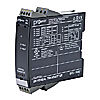
Signal conditioners, transmitters, and optical isolators solve ground loop problems, isolate noise issues, convert signals to desired levels and types, and allow longer cable runs. Limit alarms take analog inputs and provide low-limit, high-limit, or other discrete outputs based on the input value.

This page will refresh momentarily.
Warning
Some of the selected facets have been selected by the {{ assistanceData.title }} Help.
Resetting/clearing ALL facets will end {{ assistanceData.title }} Help.
![Help icon]() Selection Assistance - {{ assistanceData.title }}
Selection Assistance - {{ assistanceData.title }}
Stride Interactive Product Tour Request
Signal Conditioners / Signal Isolators / Limit Alarms
Category Selection
- Signal Conditioners with DC Voltage, Current, or Potentiometer Input
- Signal Conditioners with Universal Input
- Temperature Transmitters
- Signal Conditioners with Frequency Input
- High Speed Optical Isolators (Encoder Input)
- Limit Alarms (Analog Input, Relay Output)
- High Density Signal Conditioners
- Signal Conditioners Accessories
Signal integrity is vital for accurate control of a process, and it starts with accurate measurements and quality equipment. However, even with the best equipment, signals can be degraded if the equipment or wiring are not properly installed or isolated. Signal conditioners and isolators can mitigate such issues.
Limit alarms provide discrete outputs based on set values of its analog input.
For part listings and specifications, go to Shop Now
Signal Conditioners with DC Voltage, Current, or Potentiometer Input
These signal conditioners isolate analog voltage and current signals or provide bipolar/unipolar voltage conversions with isolation. Various inputs are supported including current, voltage, RTD, and thermocouple, with current, voltage, frequency, and/or relay outputs. Many units can be configured via DIP switches, or a programming module, depending on model.
Signal Conditioners with Universal Input
Universal input conditioners/isolators accept a variety of inputs and provide current, voltage, frequency, and/or relay outputs with programmable ranges and functions all in one unit. They are configurable via a detachable programming module that displays the input signal, engineering units, output signal, and relay status.
Temperature Transmitters
Thermocouple and RTD transmitters accept popular sensor types and measurement ranges and provide current outputs. Universal models also accept millivolt, current, and potentiometer inputs; select models offer a frequency output. These units are ideal for wiring and extending signals to controllers.
Signal Conditioners with Frequency Input
Frequency signal conditioners accept frequency signals up to 100kHz from a variety of sensor types and provide unipolar or bipolar analog (current/voltage), relay, or frequency (up to 100kHz) outputs. An optional square root relationship between the input and output is also available for flow measurement applications.
High Speed Optical Isolators (Encoder Input)
Optical isolators connect encoders to PLCs, servo drives, and other devices. They solve electrical noise issues, convert encoder signal types or voltage levels, provide multi-channel high-speed isolation for other sensor types, and can be used as repeaters for long cable runs.
Limit Alarms (Analog Input, Relay Output)
Limit alarms accept analog inputs and provide low-limit, high-limit, or other discrete output indications based on the input value. Voltage or current input signals are compared to trip points configured via DIP switches or a programming module. Relay outputs can be used to interface with other process equipment.
High Density Signal Conditioners
6mm-wide signal conditioners are space-saving units that provide conversion of standard voltage and current signals, bipolar signals, thermocouples and RTDs, with isolation to eliminate ground loop problems. Models include single-, two-channel, and signal splitter styles.
Signal Conditioners Accessories
Accessories and spare parts for signal conditioners include replacement terminal blocks, configuration software for programmable units, configuration cable (for use with software), and a detachable programming/display module for select models.
Check out our job openings
Free Online PLC Training
FREE Video Tutorials
FREE e-Newsletter
Automation Notebook
Product Literature
White Papers
News, Product and Training Bulletins
E-Books
 Safe &
Secure
Safe &
Secure

We accept VISA, MasterCard, Discover, American Express, PayPal or company purchase orders.
Voted #1 mid-sized employer in Atlanta
Check out our
job openings

